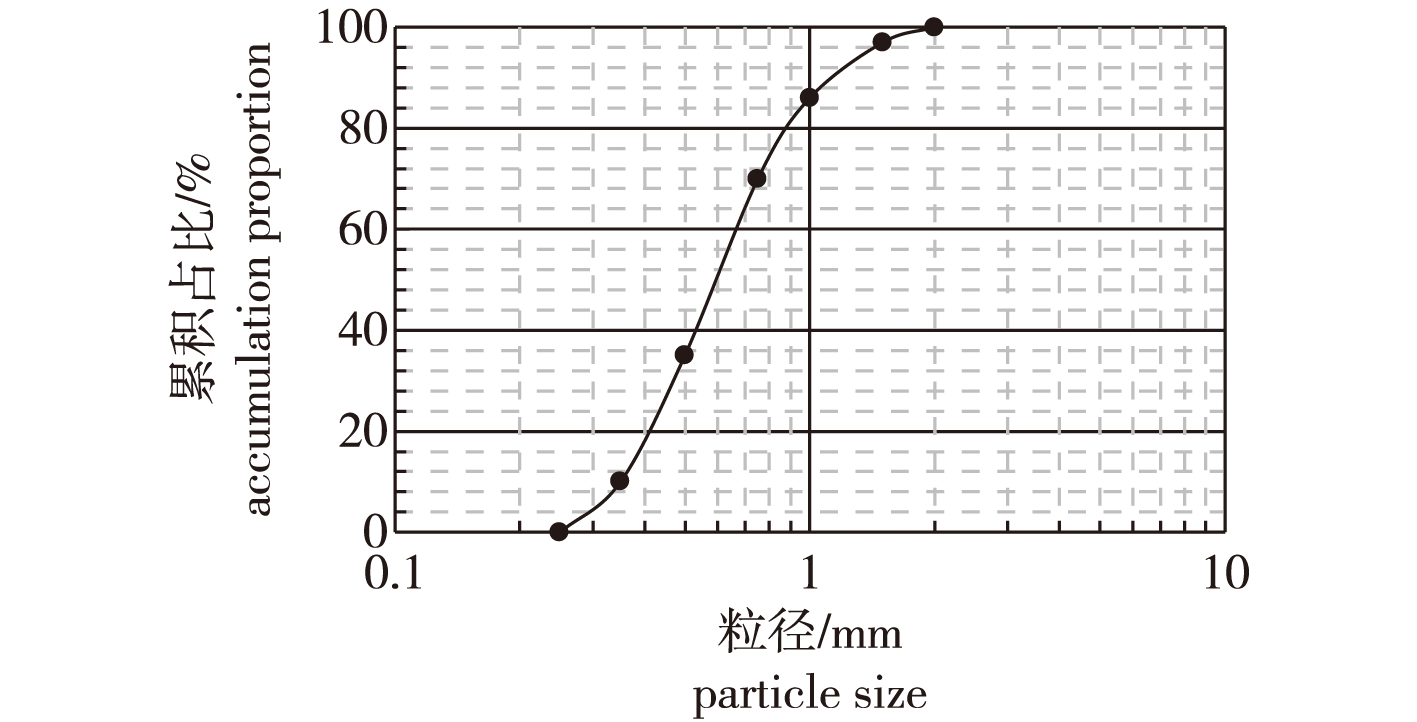 PDF(5996 KB)
PDF(5996 KB)


Experimental study on uniformity of microbial cemented sand by bio-grouting
DAI Di, PENG Jie, LIU Zhiming, WEI Renjie, LI Liangliang
Journal of Nanjing Forestry University (Natural Sciences Edition) ›› 2025, Vol. 49 ›› Issue (1) : 217-224.
 PDF(5996 KB)
PDF(5996 KB)
 PDF(5996 KB)
PDF(5996 KB)
Experimental study on uniformity of microbial cemented sand by bio-grouting
【Objective】This study aims to advance the application of microbial-induced carbonate precipitation (MICP) in soil and water conservation, it is essential to understand bacterial solution distribution and reinforcement effects. This study proposes a method for indirectly testing the uniformity of bacterial distribution in sand samples, providing a reference for future research.【Method】A one meter long sand column was injected with Sporosarcina pasteurii, and MICP grouting tests were conducted on standard sand. The study compared bacterial solution distributions and reinforcement uniformity with parallel samples and analyzed how bacterial injection methods and the grouting process affected these factors. 【Result】Direct injection of the bacterial solution and alternate injection methods resulted in a more uniform initial distribution of bacteria in the sand column, which could be indirectly evaluated by the urease activity of the bacteria. The subsequent grouting process changed the distribution of bacteria in the sand column. The influence of the fixative solution on the uniformity of the bacterial distribution was small at a flow rate of 4 mL/min, but the washing effect of the cementing liquid on the uniformity of the bacterial distribution was obvious, resulting in significant differences in the unconfined compressive strength and calcium carbonate production of each section of the sand column. 【Conclusion】Testing the urease activity of stirred water solutions in sand samples containing bacteria is a reliable method for indirectly measuring bacterial distribution. The uneven phenomena generated during consolidation are mainly caused by the grouting of cementing liquid. Therefore, direct and alternate injection methods achieve a more uniform reinforcement effect.

conservation of water and soil / cemented sand / bio-grouting / bacterial distribution / uniformity of reinforcement
| [1] |
王海波, 赵志峰, 张甜. 季节性冻融对滞洪区改良路基性能的影响[J]. 南京林业大学学报(自然科学版), 2016, 40(3):156-162.
|
| [2] |
邵光辉, 尤婷, 赵志峰, 等. 微生物注浆固化粉土的微观结构与作用机理[J]. 南京林业大学学报(自然科学版), 2017, 41(2):129-135.
|
| [3] |
邵光辉, 冯建挺, 赵志峰, 等. 微生物砂浆防护粉土坡面的强度与抗侵蚀性影响因素分析[J]. 农业工程学报, 2017, 33(11):133-139.
|
| [4] |
唐朝生, 泮晓华, 吕超, 等. 微生物地质工程技术及其应用[J]. 高校地质学报, 2021, 27(6):625-654.
|
| [5] |
|
| [6] |
刘汉龙, 肖鹏, 肖杨, 等. 微生物岩土技术及其应用研究新进展[J]. 土木与环境工程学报(中英文), 2019, 41(1):1-14.
|
| [7] |
|
| [8] |
|
| [9] |
|
| [10] |
韩智光. 微生物加固砂土的抗液化性能多尺度试验研究[D]. 北京: 清华大学, 2017.
|
| [11] |
王绪民, 郭伟, 余飞, 等. 多浓度营养盐处理对微生物胶结砂土均匀性与强度的影响[J]. 土木建筑与环境工程, 2017, 39(3):145-150.
|
| [12] |
侯敏. 微生物粉土一维注浆尺寸效应研究[D]. 南京: 南京林业大学, 2018.
|
| [13] |
|
| [14] |
|
| [15] |
|
| [16] |
|
| [17] |
邵光辉, 黄容聘. 电场改善微生物水泥胶结砂均匀性[J]. 硅酸盐学报, 2018, 46(11):1575-1583.
|
| [18] |
|
| [19] |
|
| [20] |
|
| [21] |
|
| [22] |
|
| [23] |
崔明娟, 郑俊杰, 赖汉江. 菌液注射方式对微生物固化砂土动力特性影响试验研究[J]. 岩土力学, 2017, 38(11):3173-3178.
|
| [24] |
谭慧明, 陈福茂, 何稼, 等. 土颗粒尺寸对微生物诱导碳酸钙沉积反应速率的影响[J]. 哈尔滨工程大学学报, 2019, 40(11):1884-1889.
|
| [25] |
王子玉, 喻文晔, 齐超楠, 等. 海水环境下MICP的反应机理与影响因素[J]. 土木与环境工程学报(中英文), 2022, 44(5):128-135.
|
| [26] |
彭劼, 冯清鹏, 孙益成. 温度对微生物诱导碳酸钙沉积加固砂土的影响研究[J]. 岩土工程学报, 2018, 40(6):1048-1055.
|
| [27] |
|
| [28] |
|
| [29] |
|
/
| 〈 |
|
〉 |